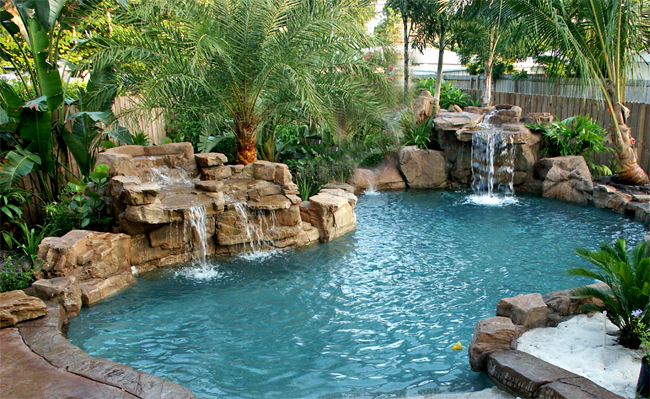According to numbers on file with Florida’s County Property Appraisers’ Offices, there are currently over 1 million residential and commercial swimming pools in the Sunshine State. While the warm climate in states like Florida, Arizona and California makes the ownership and use of swimming pools an attractive feature of everyday life throughout most of the year, there is an unfortunate aspect to this statistic: each year hundreds of young children die, and thousands more come close to death, due to accidental drowning or submersion in residential swimming pools.
In fact, in the three states mentioned above, drowning is the leading cause of accidental death in and around the home for children under five years of age. The U.S. Consumer Product Safety Commission (CPSC) estimates that about 300 young children drown every year in America, and emergency room treatment is required for 4000 more. 75 percent of the children involved in pool accidents are between one and three years old.
What is truly tragic – and somewhat astounding – is that in most cases, the young victims were actually being supervised by one or both parents when the swimming pool accident occurred. Moreover, in the vast majority of cases, the children had only been missing for a mere five minutes before they were found in the pool submerged or drowned. The sad irony is that many of these children could have been saved if the homeowners had completely fenced in their backyard pools and installed self-closing and self-latching devices on gates that prevented their toddlers from getting under, over, or through the barrier.
Pool Barrier Laws and Codes
While there are no universal, mandatory requirements for the erection of pool barriers, some states, counties, and municipalities have incorporated specific guidelines into their building codes that require pool barriers for new pool construction. And while some jurisdictions follow the swimming pool barrier guidelines promulgated by the CPSC, others rely on guidelines set down in the International Building Code, developed by the Building Officials Code Administrators (BOCA).
Section 421.10.1 of the BOCA National Building Code outlines many requirements for barriers and fencing for all outdoor private swimming pools, including in ground, above ground, and on ground pools, as well as hot tubs and spas. For example, according to the BOCA guidelines, the minimum height of the barrier must be 48 inches; the maximum clearance between the ground and the bottom of the barrier can be no more than 2 inches; and openings in the barrier cannot allow the passage of a 4 inch diameter sphere, among other stipulations.
Other recommendations concern solid barriers and those that are made of chain link fencing that may, or may not, contain lattices or diagonal members. Finally, the BOCA standards specify guidelines for pool access gates and doors and their latches, as well as alarms that can produce an audible warning when a door or gate is opened.
Florida’s Residential Swimming Pool Safety Act
In 2000 the Florida Senate proposed, and in 2009, the legislature passed ,the Residential Swimming Pool Safety Act (Chapter 515, Florida Statutes), also known as the Preston de Ibern/McKenzie Merriam Residential Swimming Pool Safety Act.
Under Section 515.29 of the Act, a residential swimming pool built after October 1, 2000, must have a pool barrier with all of the following characteristics:
- The barrier must be at least 4 feet high on the outside.
- The barrier may not have any gaps, openings, indentations, protrusions, or structural components that could allow a young child to crawl under, squeeze through, or climb over the barrier.
- The barrier must be placed around the perimeter of the pool and must be separate from any fence, wall, or other enclosure surrounding the yard unless the fence, wall, or other enclosure or portion thereof is situated on the perimeter of the pool, is being used as part of the barrier, and meets the barrier requirements of this section.
- The barrier must be placed sufficiently away from the water’s edge to prevent a young child or medically frail elderly person who may have managed to penetrate the barrier from immediately falling into the water.
- The structure of an aboveground swimming pool may be used as its barrier or the barrier for such a pool may be mounted on top of its structure; however, such structure or separately mounted barrier must meet all barrier requirements of this section. In addition, any ladder or steps that are the means of access to an aboveground pool must be capable of being secured, locked, or removed to prevent access or must be surrounded by a barrier that meets the requirements of this section.
- Gates that provide access to swimming pools must open outward away from the pool and be self-closing and equipped with a self-latching locking device, the release mechanism of which must be located on the pool side of the gate and so placed that it cannot be reached by a young child over the top or through any opening or gap.
- A wall of a dwelling may serve as part of the barrier if it does not contain any door or window that opens to provide access to the swimming pool.
- A barrier may not be located in a way that allows any permanent structure, equipment, or similar object to be used for climbing the barrier.
The Act also mandates that “a licensed pool contractor, on entering into an agreement with a buyer to build a residential swimming pool, or a licensed home builder or developer, on entering into an agreement with a buyer to build a house that includes a residential swimming pool, must give the buyer a document containing the requirements” of the law.

